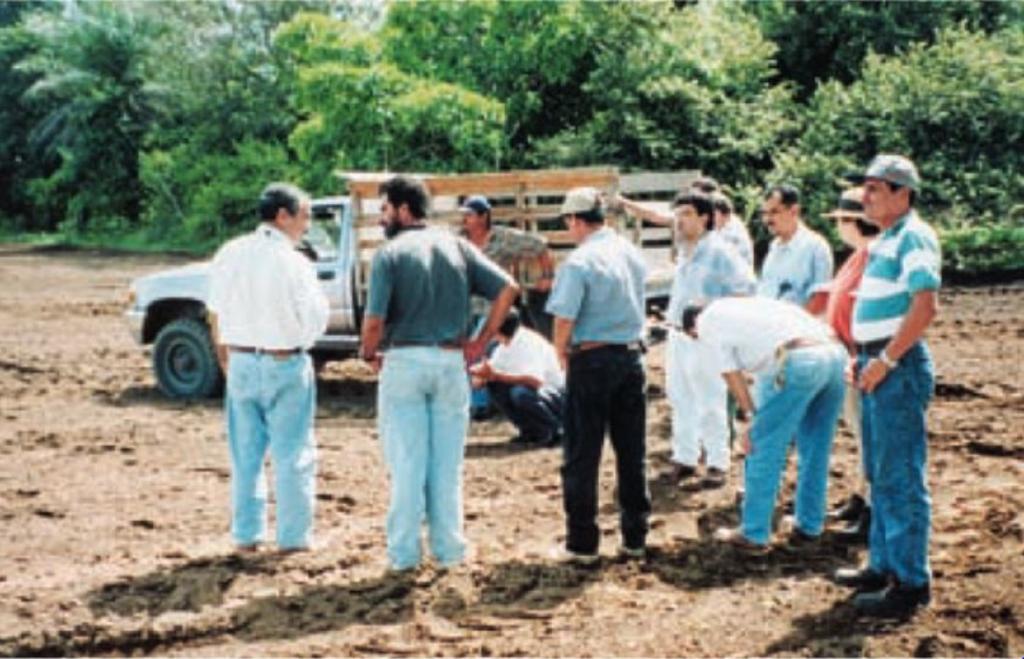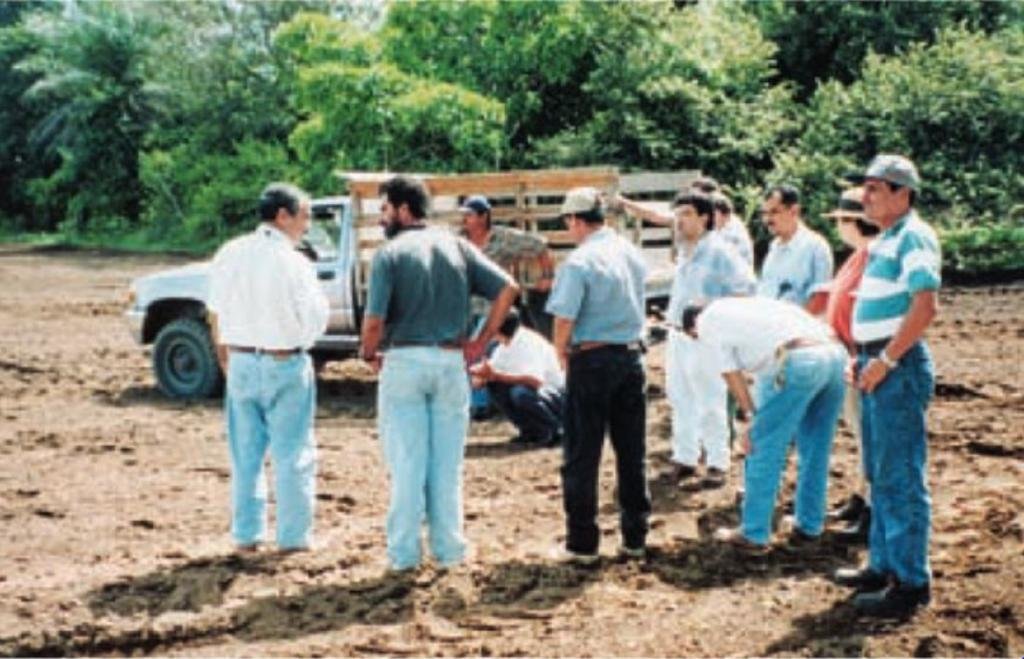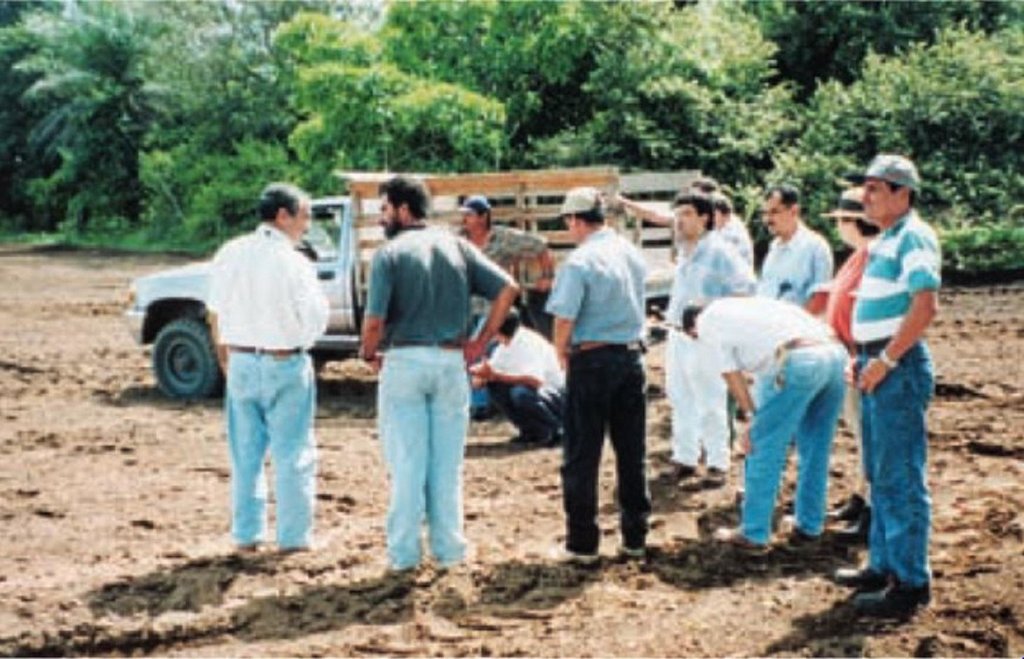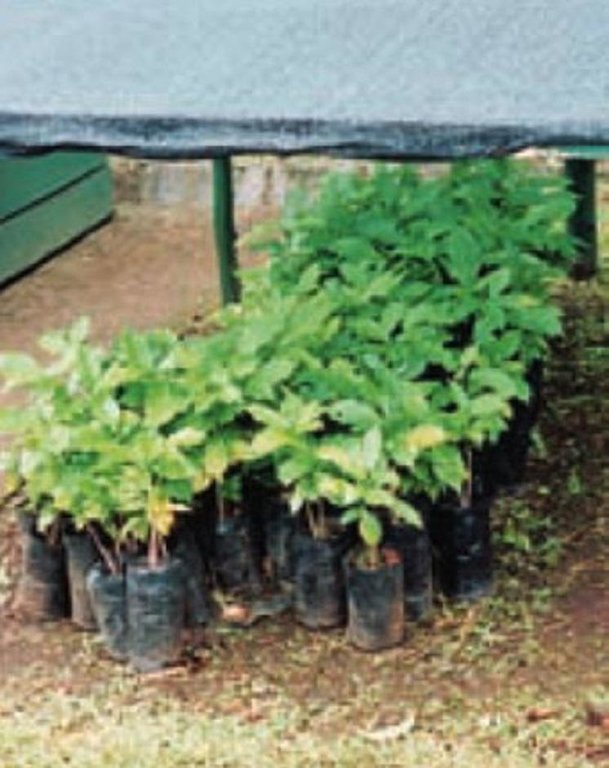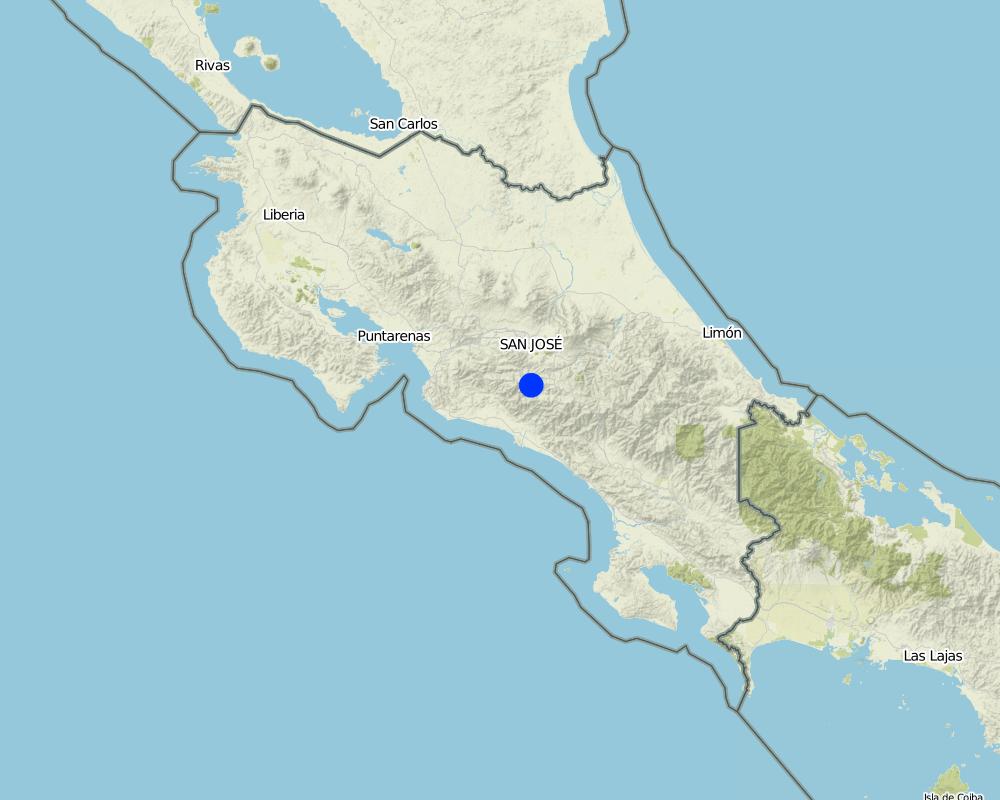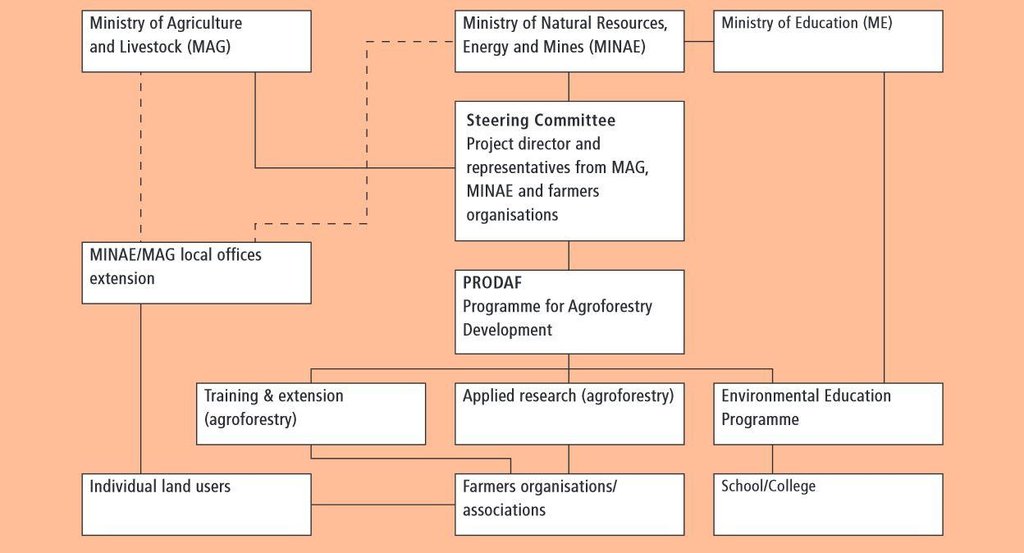Agroforestry extension [Коста Рика]
- Шинийг нээх:
- Шинэчлэх:
- Эмхэтгэгч: Olman Quiros Madrigal
- Хянан тохиолдуулагч: –
- Хянагчид: David Streiff, Deborah Niggli
approaches_2391 - Коста Рика
Бүлгүүдийг үзэх
Бүгдийг дэлгэх Бүгдийг хаах1. Ерөнхий мэдээлэл
1.2 Арга барилыг баримтжуулах болон үнэлгээ хийхэд оролцсон хүн эсвэл байгууллагын холбоо барих хаяг
Арга барилыг баримтжуулах/үнэлэх ажилд дэмжлэг үзүүлсэн төслийн нэр (шаардлагатай бол)
Book project: where the land is greener - Case Studies and Analysis of Soil and Water Conservation Initiatives Worldwide (where the land is greener)1.3 WOCAT-аар баримтжуулсан өгөгдлийг ашиглахтай холбоотой нөхцөл
Эмхэтгэгч болон гол мэдээлэгч хүн(хүмүүс) WOCAT аргачлалаар баримтжуулсан мэдээллийг ашиглахтай холбоотой нөхцлийг хүлээн зөвшөөрсөн:
Тийм
1.4 ГТМ-ийн технологийн асуулгын(д) суурь мэдээлэл(д)
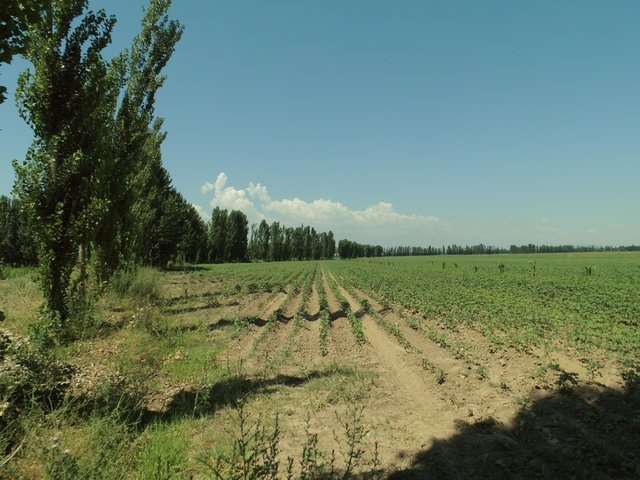
Tree windbreaks within irrigated agriculture in Central Asia [Киргизстан]
Windbreaks of poplar trees (Populus nigra pyramidalis) are a major agroforestry system in irrigated agriculture across Central Asia. Such windbreaks reduce the overall water consumption of irrigated agriculture by 10-20% and increase farm income by 10-15%.
- Эмхэтгэгч: Niels Thevs
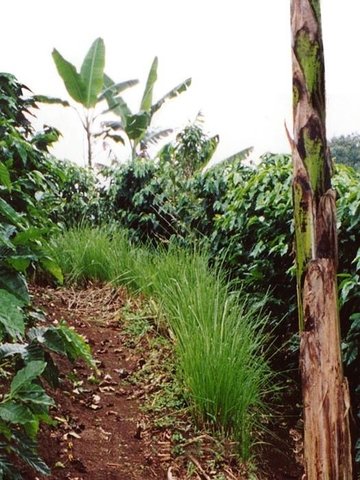
Shade-grown coffee [Коста Рика]
An agroforestry system which combines coffee with shade trees - including fruit, timber and leguminous species - in a systematic fashion.
- Эмхэтгэгч: Olman Quiros Madrigal
2. ГТМ Арга барилын тодорхойлолт
2.1 Арга барилын товч тодорхойлолт
Participatory extension of agroforestry systems, especially of shadegrown coffee, to promote sustainable and productive use of natural resources among small and medium scale farmers.
2.2 Арга барилын дэлгэрэнгүй тодорхойлолт
Арга барилын дэлгэрэнгүй тодорхойлолт:
Aims / objectives: The Programme for Agroforestry Development (PRODAF) pioneered a new type of agroforestry extension in Costa Rica between 1987 and 1994. PRODAF was positioned under two national ministries (the Ministry of Agriculture and Livestock - MAG and the Ministry of Natural Resources, Energy and Mines - MINAE) and was supported by GTZ (German Technical Cooperation). Agroforestry extension underpinned the following sectors: environmental education, promotion of training and technical assistance in agriculture and forestry, development of programmes for afforestation and agroforestry systems, and promotion/support of farmers' organisations. The approach was based on land users' participation at all stages. The main purpose of the agroforestry extension approach was the development and promotion of sustainable production systems, which were adapted to the local biophysical and socio-economic conditions. This was to enable environmentally friendly production on steep slopes, while at the same time generating sufficient income for small and medium scale farmers in marginal areas of the Acosta-Puriscal region. In this case study, shade-grown coffee was identified to be a system that fulfilled these conditions. Another important objective was the involvement of all family members - including the younger generation.
Role of stakeholders: In the first years PRODAF operated with a top-down development approach implementing technologies, designed by specialists, without consultation of land users. Local needs and experiences were not considered: as a result both adoption of shade-grown coffee was low, and maintenance was poor, despite initial incentives. The change to a participatory, bottom-up approach, with land users being represented in the steering committee (which during this period was absolutely innovative) increased acceptance among the majority of farmers towards shade-grown coffee. Participation of land users during planning and implementation was rewarded with provision of tools, seeds, fertilizer and biocides (fully financed or subsidised). The technology was evaluated on the test plots within existing coffee plantations together with the land users. PRODAF's legacy has been an institutional change in Government policy towards extension.
2.3 Арга барилын зурагууд
2.5 Арга барил нэвтрүүлсэн улс орон / бүс нутаг / байршил
Улс:
Коста Рика
Улс/аймаг/сум:
San José/Río Parrita
Map
×2.6 Арга барилыг эхлэх, дуусах огноо
Эхлэх жилийг тэмдэглэ:
1987
Хугацаа дуусах жил (Хэрэв арга барил удаанаар ашиглаагүй бол):
1994
2.7 Арга барилын төрөл
- төсөл / хөтөлбөр дээр үндэслэсэн
2.8 Арга барилын үндсэн зорилго, зорилтууд
Promotion of appropriate management of natural resources and adoption of the shade-grown coffee agroforestry system - café arbolado - among small and medium scale farmers.
The SLM Approach addressed the following problems: - various different approaches of forest and agricultural technicians regarding choice and implementation of the technology, - which needed harmonising, - lack of incentives for farmers to adopt technology, - lack of participatory technology development
2.9 Арга барилын хүрээнд хэрэгжсэн Технологи/Технологиудад дэмжсэн эсвэл саад учруулсан нөхцлүүд
санхүүгийн нөөц, үйлчилгээний хүртээмж / боломж
- Хазаарлалт
Lack of credit for SWC implementation.
Treatment through the SLM Approach: Credit has been made available through the 'productive re-conversion programme' and other credit systems for organic/conservation production, eg Fideicomiso (see under credit).
Бүтэц зохион байгуулалт
- Хазаарлалт
Lack of collaboration and coordination between different institutions.
Treatment through the SLM Approach: Innovative incorporation of land users in decision making, which in the meantime has become a common approach.
Хууль, эрхзүйн хүрээ (газар эзэмшил, газар, ус ашиглах эрх)
- Идэвхижүүлэх
The existing land ownership, land use rights / water rights moderately helped the approach implementation: Land fragmentation leads to very small areas per household. This hinders implementation of SWC activities. Land users do not have the resources to invest in initial inputs and activities.
- Хазаарлалт
Subdivision of land hinders adoption of SWC measures.
Treatment through the SLM Approach: Not directly treated by the approach. Diverse incentive mechanisms have to be identified to promote SWC activities on small areas.
ГТМ-ийн талаарх мэдлэг, техникийн дэмжлэг авах боломж
- Хазаарлалт
Lack of technical knowledge, lack of research activities/trials with SWC technologies.
Treatment through the SLM Approach: Promotion of alternative production systems and SWC measures had great impact. Technology was tested on-farm. PRODAF did not focus on research activities.
3. Оролцогч талуудын оролцоо ба үүргүүд
3.1 Арга барилд оролцогч талууд болон тэдгээрийн үүргүүд
- Орон нутгийн газар ашиглагч / орон нутгийн иргэд
Mainly men participated: women are not usually expected to carry out field activities for cultural reasons. The coffee harvest is the only activity where men and women work together in the field.
- ГТМ-ийн мэргэжилтэн/ хөдөө аж ахуйн зөвлөх
- Засгийн газар (шийдвэр гаргагч, төлөвлөгч)
3.2 Арга барилын янз бүрийн үе шатанд орон нутгийн газар ашиглагчид / бүлэглэлүүдийг татан оролцуулах
| Орон нутгийн газар ашиглагч / орон нутгийн иргэдийн оролцоо | Хэн оролцсоныг тодорхойлж, үйл ажиллагааг тайлбарлана уу | |
|---|---|---|
| санаачлага/идэвхжүүлэлт | интерактив | rapid/participatory rural appraisal; good participation basically through participative rural appraisal |
| Төлөвлөгөө | интерактив | workshops/seminars; incentives are provided for participating land users |
| Хэрэгжилт | интерактив | responsibility for major steps; incentives are provided for participating land users |
| Мониторинг/ үнэлгээ | интерактив | workshop/seminars, interviews/questionnaires; |
| Research | интерактив | on-farm |
3.3 Диаграм (хэрэв боломжтой бол)
3.4 ГТМ-ийн технологи/технологиуд сонгох шийдвэр
Хэрэгжүүлэх Технологи/Технологиудын сонголтыг хийж шийдвэр гаргасан хүнийг тодорхойлно уу:
- голдуу ГТМ-ийн мэргэжилтнүүд, газар ашиглагчидтай зөвлөлдсөний үндсэн дээр
Тайлбар:
Decisions on the method of implementing the SLM Technology were made by mainly by SLM specialists with consultation of land users
4. Техникийн дэмжлэг, чадавхи бүрдүүлэх, мэдлэгийн менежмент
4.1 Чадавхи бэхжүүлэх/сургалт
Газар эзэмшигчид / бусад оролцогч талуудад сургалт явуулсан уу?
Тийм
Сургалтын хэлбэр:
- фермерээс -фермер
- үзүүлэнгийн талбай
- Олон нийтийн уулзалт
Сургалтын хэлбэр:
- trips to projects in, field days, workshops
Хамрагдсан сэвдүүд:
The following subjects were treated: coffee agroforestry system, fruit trees and soil conservation, silvo-pastoralism, soil conservation in general. Beside knowledge transfer, awareness raising and motivation were important aims of training.
4.2 Зөвлөх үйлчилгээ
Газар ашиглагчдад зөвлөх үйлчилгээ авах боломжтой байдаг уу?
Тийм
Зөвлөх үйлчилгээ үзүүлсэн эсэхийг тогтоо:
- Газар ашиглагчийн талбай дээр
Тодорхойлолт / тайлбар:
Name of method used for advisory service: Extension carried out through extension workers was the key element of the overall approach; Key elements: the adequacy of extension for continuation was very good, Different methods were used: on-farm technical assistance; farmer-tofarmer knowledge exchange; demonstration areas and workshops.
4.3 Институцийг бэхжүүлэх (байгууллагын хөгжил)
Арга барилаар дамжуулан институц байгуулагдаж эсвэл бэхжсэн үү?
- Тийм, бага
Дэмжлэгийн төрлийг ялга:
- Санхүүгийн
- чадавхи бэхжүүлэх / сургалт
- Тоног төхөөрөмж
4.4 Мониторинг ба үнэлгээ
Мониторинг болон үнэлгээ нь арга барилын хэсэг үү?
Тийм
Тайлбар:
Bio-physical aspects were ad hoc monitored by 0 through measurements; indicators: yields
Socio-cultural aspects were regular monitored by 0 through observations; indicators: family size
Economic / production aspects were regular monitored by 0 through measurements; indicators: yields and production market
No. of land users involved aspects were regular monitored by 0 through measurements; indicators: land users involved in organisation
There were many changes in the Approach as a result of monitoring and evaluation: The approach changed completely after evaluation of the first phase, from an initial top down methodology with low technology adoption by land users, to a more participative approach heeding land users' opinions and needs, and improving communication between technicians and land users. This was helped by the development of educational materials.
4.5 Судалгаа
Судалгаа арга барилын хэсэг нь байсан уу?
Тийм
Сэдвийг тодруулна уу:
- Экологи
- Технологи
Дэлгэрэнгүй мэдээллийг өгч, хэн судалгаа явуулсныг бичнэ үү:
Results were rather meagre, and the effect on the approach was thus moderate. Previous to PRODAF there was a research project conducted by CATIE (Tropical Agricultural Research and Higher Education Centre) in the approach area, but results were not broadly disseminated.
Research was carried out on-farm
5. Санхүүгийн болон гадаад материаллаг дэмжлэг
5.1 ГТМ-ийн Арга барилын бүрэлдэхүүн хэсгийн жилийн төсөв
Тайлбар (жнь: санхүүжилтийн гол эх үүсвэр / гол хандивлагчид):
Approach costs were met by the following donors: government (national - MAG, MINAE): 50.0%; international non-government (GTZ): 50.0%
5.2 Газар ашиглагчдад санхүүгийн / материаллаг дэмжлэг үзүүлсэн
Технологи / технологийг хэрэгжүүлэхэд газар ашиглагчид санхүүгийн / материаллаг дэмжлэг авсан уу?
Тийм
5.3 Тодорхой зардлыг даахад чиглэсэн дэмжлэгт (хөдөлмөрийн хүчийг оролцуулаад)
- Тоног төхөөрөмж
| Ямар хөрөнгө оруулалт татаасаар олгогдсоныг заана уу | Ямар талбайн хэмжээнд | Тэтгэмж, урамшууллыг тодорхойлно уу |
|---|---|---|
| Багажууд | хэсэгчлэн санхүүждэг | hand tools |
- Хөдөө аж ахуй
| Ямар хөрөнгө оруулалт татаасаар олгогдсоныг заана уу | Ямар талбайн хэмжээнд | Тэтгэмж, урамшууллыг тодорхойлно уу |
|---|---|---|
| Бордоо | хэсэгчлэн санхүүждэг | |
| seedlings | Бүрэн санхүүждэг | |
Хэрэв газар ашиглагчийн хөдөлмөрийн хүч чухал байсан бол энэ нь аль хэлбэр байсан:
- сайн дурын
5.4 Кредит
Арга барилын хүрээнд ГТМ-ийн үйл ажиллагаанд зориулж зээлд хамрагдсан уу?
Тийм
Нөхцөл байдлын тодорхойлолт (хүүгийн хэмжээ, эргэн төлөлт гэх мэт):
Repayment conditions: Credit was provided through ‘productive re-conversion programme’ to support small-scale organic production and soil conservation. After PRODAF a larger (national) credit programme to promote agroforestry systems was launched, under MAG and National Production Council. Fideicomiso is another national financing programme based on a contract between a bank and development institutions. .
Interest was lower than market rate.
6. Нөлөөллийн дүн шинжилгээ ба дүгнэлт
6.1 Арга барилын нөлөөллүүд
Арга барил нь ГТМ-ийн технологийг хэрэгжүүлж, хадгалахад газар ашиглагчдад тусласан уу?
- Үгүй
- Тийм, бага зэрэг
- Тийм, зарим
- Тийм, их
There was substantial improvement of soil and water management through application of the agroforestry systems.
Did other land users / projects adopt the Approach?
- Үгүй
- Тийм, бага зэрэг
- Тийм, зарим
- Тийм, их
Some projects in the region as well as in other parts of the country adopted the approach. Various SWC extension programmes have adopted the extension methods promoted by PRODAF, based on the principles of land users participation. In the Ministry of Agriculture and Livestock it has been taken as a basic principle in the National Programme of Agricultural Extension.
6.3 Арга барилын үйл ажиллагааны тогтвортой байдал
Газар ашиглагчид арга барилаар дамжуулан хэрэгжүүлсэн арга хэмжээг тогтвортой хадгалж чадах уу (гадны дэмжлэггүйгээр)?
- Тодорхойгүй
Хэрэв үгүй эсвэл тодорхойгүй бол дэлгэрэнгүй тайлбар өгнө үү:
While the approach has been institutionalised and a national credit programme set up promoting shade-grown coffee and silvo-pastoral systems, continuation of field production activities is uncertain. Farmers’ motivation to apply technologies was raised with the Environmental Education Programme, but if market prices for coffee decrease /show variability, farmers lose the motivation to maintain i
6.4 Арга барилын тогтвортой/давуу тал/боломжууд
| Эмхэтгэгч, бусад мэдээлэл өгсөн хүмүүсийн өнцгөөс тодорхойлсон давуу тал/боломжууд |
|---|
| Institutionalisation of the basic participatory extension approach within the Ministry of Agriculture and Livestock. |
| Initial top-down approach replaced by participation with land users (How to sustain/ enhance this strength: Continue to spread information about the effectiveness of this change in attitude, and the need for responsiveness in projects and programmes.) |
| Training of land users (knowledge of soil degradation processes and soil and water conservation) (How to sustain/ enhance this strength: Collaboration with farmers organisations, NGOs and agricultural extension services. Better dissemination of research results.) |
| Environmental education in schools (How to sustain/ enhance this strength: Continue support through the Ministry of Education.) |
6.5 Арга барилын дутагдалтай/сул тал/аюул болон тэдгээрийн хэрхэн даван туулах арга замууд
| Эмхэтгэгч, бусад мэдээлэл өгсөн хүмүүсийн өнцгөөс тодорхойлсон сул тал/ дутагдал/ эрсдэл | Тэдгээрийг хэрхэн даван туулах вэ? |
|---|---|
| No economic security guaranteed in the long term because of price fluctuations | Provide a system of incentives, eg lower taxes for those who apply SWC technologies. |
7. Суурь мэдээлэл болон холбоосууд
7.1 Мэдээллийн эх үүсвэр/аргууд
- Хээрийн уулзалт, судалгаа
- Газар ашиглагчтай хийсэн ярилцлага
7.2 Холбогдох бүтээлийн ишлэл
Гарчиг, зохиогч, он, ISBN:
PRODAF (1992) Informe de evaluación de las parcelas agroforestales establecidas por PRODAF, Periodo 88-91, Puriscal,Quiros O (2000) Nachhaltigkeit von landwirtschaftlichen Produktionsverfahren in bäuerlichen Familienbetrieben in Costa Rica.
Хаанаас авч болох вэ? Зардал?
Vauk-Kiel KG: series of: Sozialökonimische Schriften zur Ruralen Entwicklung, Vol. 20
Холбоос ба модулууд
Бүгдийг дэлгэх Бүгдийг хаахХолбоосууд

Tree windbreaks within irrigated agriculture in Central Asia [Киргизстан]
Windbreaks of poplar trees (Populus nigra pyramidalis) are a major agroforestry system in irrigated agriculture across Central Asia. Such windbreaks reduce the overall water consumption of irrigated agriculture by 10-20% and increase farm income by 10-15%.
- Эмхэтгэгч: Niels Thevs

Shade-grown coffee [Коста Рика]
An agroforestry system which combines coffee with shade trees - including fruit, timber and leguminous species - in a systematic fashion.
- Эмхэтгэгч: Olman Quiros Madrigal
Модулууд
Модуль байхгүй байна


